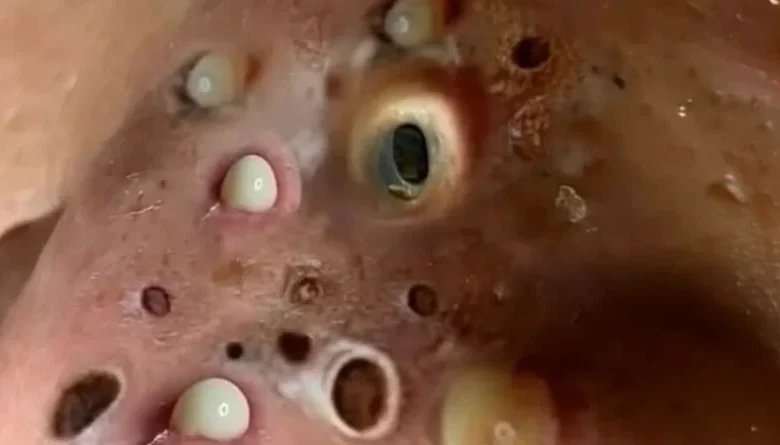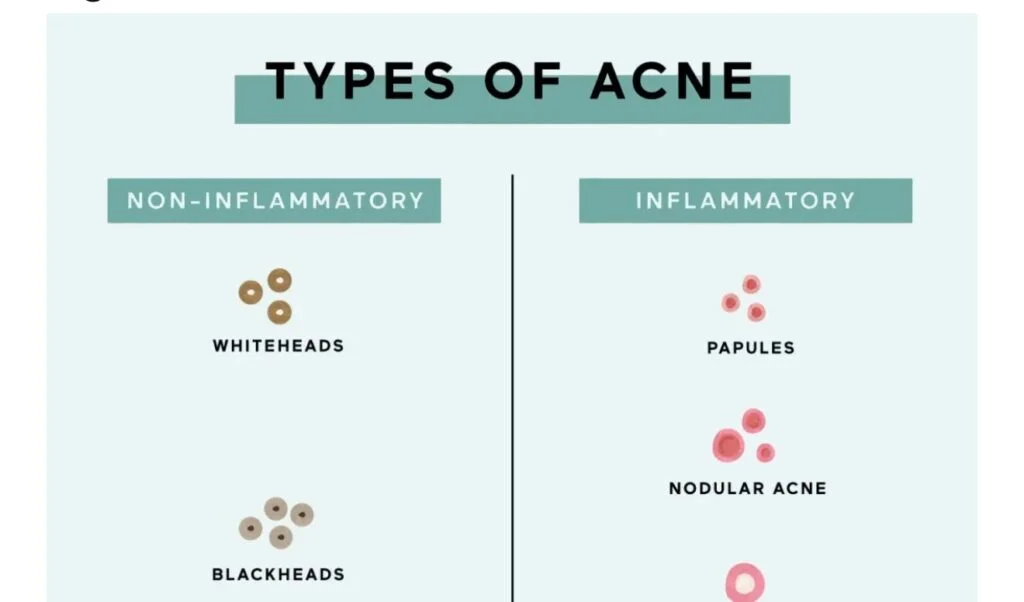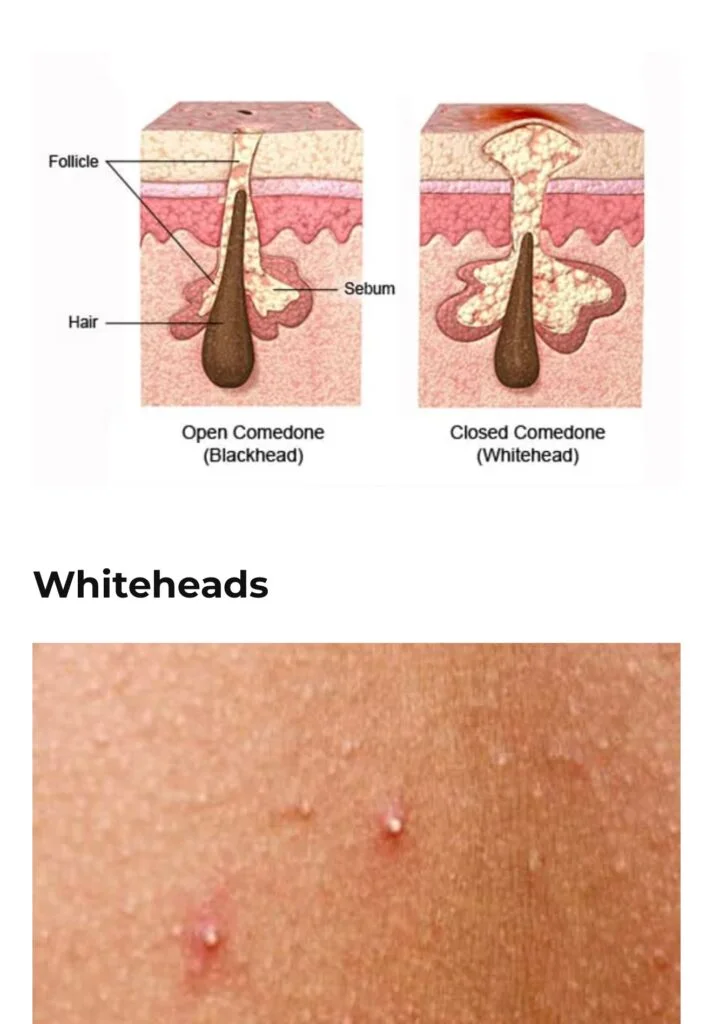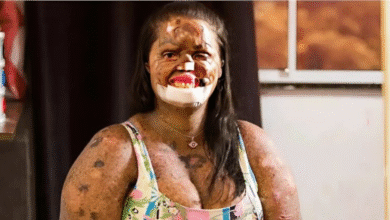
CAUSES AND WHAT THEY MIGHT REPRESENT
Acne, the complex skin condition it is, comes in many forms. While each pimple is technically formed the same way-dead skin, oil, and debris stick together and block the pores-but from there, it can develop into various types of blemishes. Some are large, red, and tender to the touch (like cysts); others are speckled across your skin, causing textural concerns (blackheads and whiteheads).
Here, we dive into the seven types of acne, the causes, and how to best treat each spot. In terms of remedies, the tips we provide here only scratch the surface, as treating acne requires a holistic view-diet, stress, and sleep can all affect the condition, but this article will focus on specific ingredients for each blemish.

Non-Inflammatory versus
Inflammatory Acne
Each type of acne technically falls into one of two categories: non-inflammatory or inflammatory though to be clear, all acne stems from some level of inflammation. A few types are more tender, puffy, and angry than others-those are classified as “inflammatory.”
Papules, pustules, nodules, and cysts fall into this category, as they’re all typically red and painful.
“Non-inflammatory” acne, on the other hand, results in subtler mounds-these are your whiteheads, blackheads, and subclinical breakouts. Also known as comedonal acne, the bumps tend to be flesh-toned, aside from blackheads, which are darker in color) It is typically caused by clogged hair follicles and found where the skin is more oily, like the chest, back, and T-zone area of the face.
Non-inflammatory acne can become inflamed later on when there is an overgrowth of bacteria (specifically Cutibacterium acnesl), which can cause the release of inflammatory cytokines and messengers to create clinical inflammation. So again, all acne is inflammation on some level.

Closed comedones are whiteheads; they look like tiny whitish or flesh-colored bumps on the surface of the skin. Whiteheads are not the large, tender pimples with a big pus-filled center (those are pustules, which we’ll get into later).
Rather, because whiteheads are not inflamed, they are much subtler. Think small, fleshy bumps on the skin, caused by dead skin, excess oil, and overall debris blocking the pores.
How to treat it:
- AHAs or BHAs: Sloughing off the dead skin can help you avoid clogging the pores in the first place. Salicylic acid is an ideal option for oily skin (it is oil-soluble allowing it to penetrate into the pores), while AHAs like lactic acid are typically more hydrating and more suitable for those with drier or sensitive skin types.
- Retinol: Retinol and retinoids enhance the skin’s normal turnover process to prevent dead skin cells from accumulating in the pore. Osmosis Skincare offers a range of exceptional Retinal Serums utilizing pharmaceutical grade liposomal retinaldehyde and proprietary nutrients beyond the surface to feed and remodel the skin.
- Get regular peels: There may be a genetic component to nodular acne; that said, if you have
Blackheads
Blackheads form the same way whiteheads do (when the pore becomes blocked with gunk and oil) with one difference:
They’re considered open comedones. An open comedone, or blackhead, occurs when the debris is exposed to the air, whereas a closed comedone, or whitehead, occurs when the debris is just under the surface of the skin and not exposed to the air. That oxygen exposure is what makes them turn dark in color.
How to treat it.
Blackheads and whiteheads are cut from the same cloth (aside from the oxidation of the plug),
- AHAS, BHAs & clays: Cleansers with salicylic acid, clay masks, and chemical exfoliants with alpha- and beta-hydroxy acids can all help to exfoliate the skin and make your skin less prone to developing blackheads. An excellent option here is Osmosis Skincare’s Deep, a detoxifying cleanser that works to remove deep impurities and promotes an invigorating clean.
- Blackhead removers: You can find a slew of market products dedicated to this very issue, from daily toners to blackhead masks to treatment gels (you won’t find any pore strips-as those do not actually unclog the plug at its source).
- DIY masks: Plenty of natural ingredients can gently dissolve dead skin cells and lift debris from the pores, including Cranberry Enzyme, a key ingredient in Osmosis Skincare’s Cranberry Enzyme Mask.






